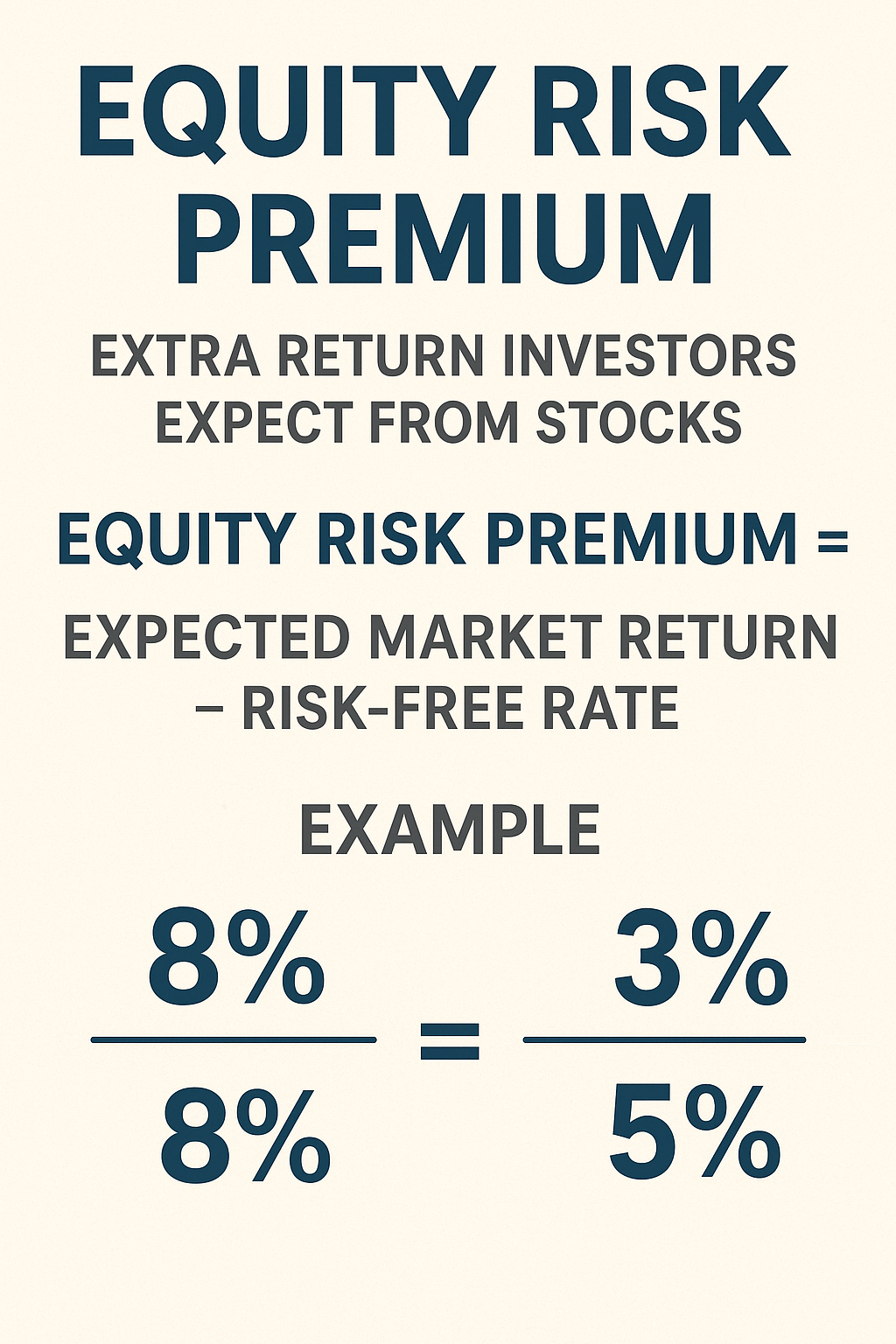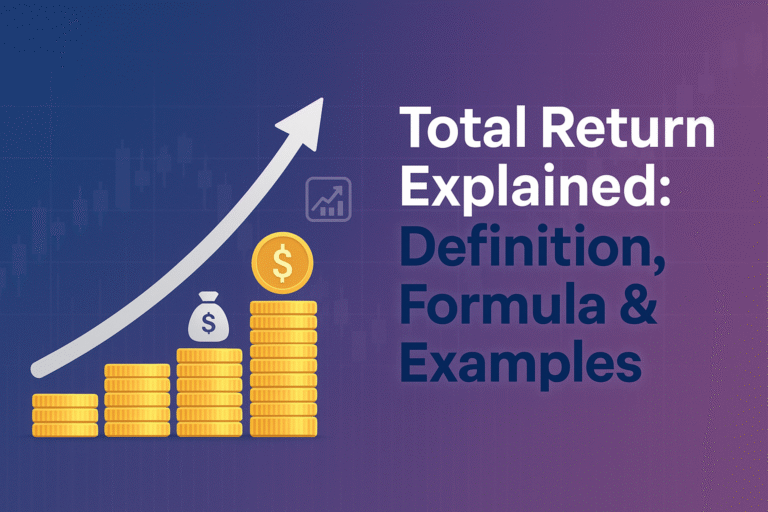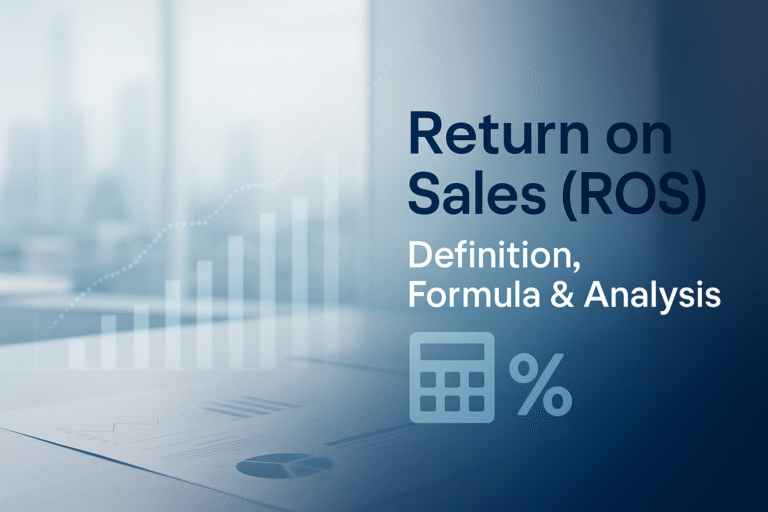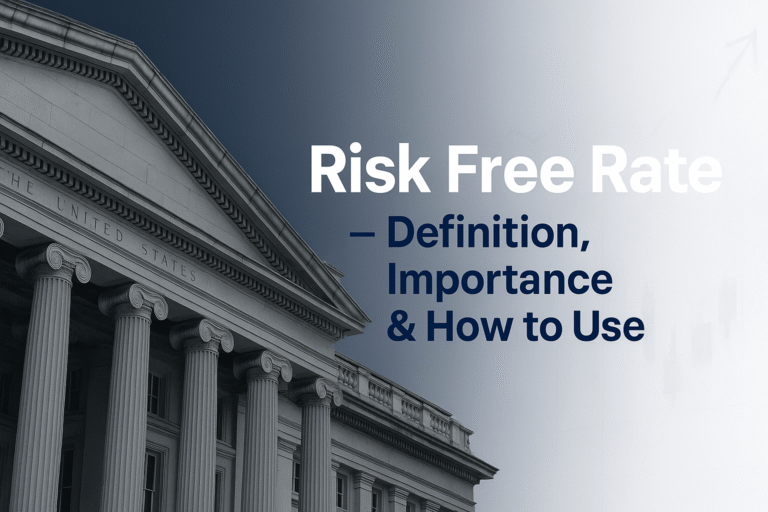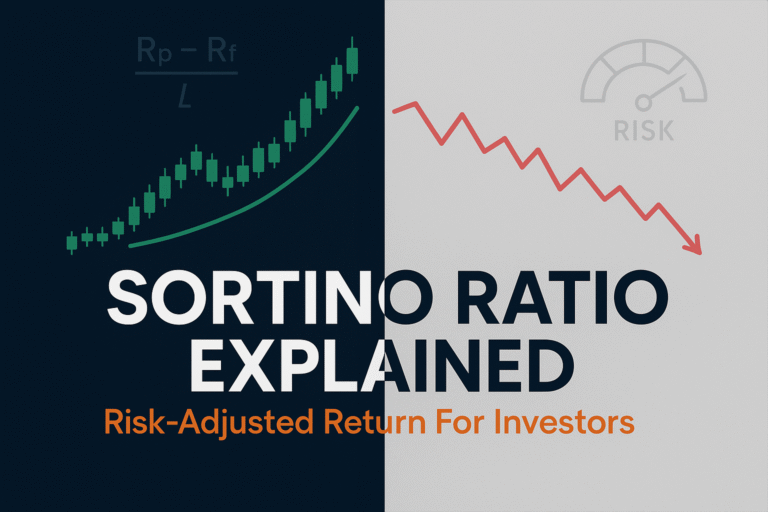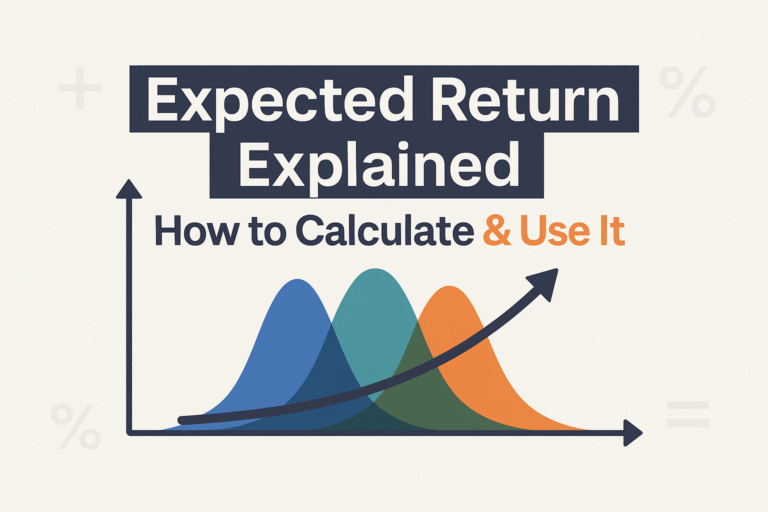What Is Equity Risk Premium?
The equity risk premium (ERP) is the extra return that investors expect from investing in stocks compared to risk-free assets like U.S. Treasury bonds.
In simple terms:
ERP = Stock Market Return − Risk-Free Rate
It’s the reward investors demand for taking on the higher risk of stocks versus safer investments. ERP is central to finance, valuation, and portfolio management because it directly affects the cost of equity, stock valuations, and long-term investment decisions.
Formula for Equity Risk Premium
Here’s the standard formula:
Equity Risk Premium = Expected Market Return − Risk Free Rate
- Expected Market Return = average return investors expect from the stock market (e.g., S&P 500).
- Risk-Free Rate = return on government bonds (e.g., 10-year U.S. Treasury yield).
Example
- Expected Market Return = 8%
- Risk-Free Rate = 3%
ERP =8% − 3% = 5%
This means investors expect 5% more return from equities than from risk-free bonds.
Historical vs Forward-Looking ERP
- Historical ERP – Based on past stock market returns over bonds (commonly 4–6% in the U.S.).
- Forward-Looking ERP – Estimated using valuation models like the Dividend Discount Model (DDM) or earnings yield approach.
| Approach | Data Used | Strengths | Weaknesses |
|---|---|---|---|
| Historical | Past stock & bond returns | Simple, data-driven | May not reflect future conditions |
| Forward-Looking | Earnings forecasts, dividends, valuations | More relevant to today | Model-dependent, subjective |
Why Equity Risk Premium Matters
- Valuation Models: Used in CAPM (Capital Asset Pricing Model) to calculate the cost of equity.
- Portfolio Allocation: Guides asset allocation between stocks vs. bonds.
- Risk Assessment: Helps investors gauge how much return is justified for stock risk.
- Corporate Finance: Companies use ERP in project valuations and WACC (Weighted Average Cost of Capital).
Advantages Equity Risk Premium
- Provides a framework for pricing risk.
- Essential for CAPM and DCF valuation.
- Helps investors compare equities vs. bonds.
- Historical data shows long-term stock market outperformance.
Disadvantages Equity Risk Premium
- It is difficult to estimate accurately (future returns are uncertain).
- Sensitive to assumptions (growth rates, inflation, interest rates).
- ERP systems change with economic cycles, making them unstable.
Investor & Business Use Cases
- Individual Investors: Deciding whether stocks are worth the risk over bonds.
- Portfolio Managers: Adjusting asset allocation based on ERP estimates.
- Companies: Using ERP in WACC to discount cash flows.
- Analysts: Valuing equities and determining market attractiveness.
FAQS
A typical ERP in the U.S. ranges between 4% and 6%, but it varies with market conditions.
Higher ERP → higher cost of equity → lower stock valuations (and vice versa).
ERP rises in uncertain markets (higher risk perception) and falls in stable, low-risk environments.
No. Emerging markets usually have higher ERP because they’re riskier than developed markets like the U.S.
Other Link Suggestions
Sources Linkx
- U.S. Securities and Exchange Commission (SEC)
- Morningstar Market Insights
- Damodaran’s Equity Risk Premium Data
Bottom Line
The equity risk premium (ERP) is the cornerstone of modern finance, capturing the extra return investors demand for holding stocks over risk-free assets. While its exact value shifts with market conditions, ERP plays a vital role in valuations, investment decisions, and portfolio management.
If you’re an investor or business owner, tracking ERP helps you understand market risk and make smarter financial choices.

